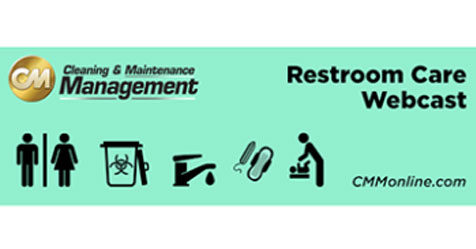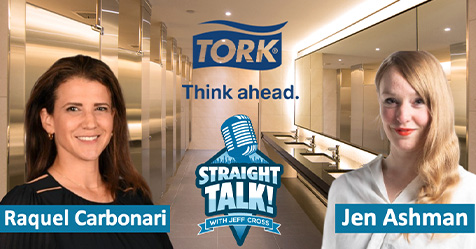Most of us have seen baby changing stations in public restrooms, and they are possibly already installed in buildings we manage or clean.
However, facility managers and cleaning professionals may not know that a bill called the BABIES bill was signed into law by President Obama near the end of his term. The BABIES bill refers to the Bathrooms Accessible in Every Situation Act, which requires all publically-accessible federal buildings to have baby changing stations for both women’s and men’s restrooms.
While this law may not impact your facility now, it may in the future. Changes like these tend to eventually find their way into privately-owned commercial facilities. This means we can expect more building managers to install baby changing systems and more cleaning workers to be called upon to clean and maintain them.
Station Regulations
Several regulations are now associated with baby changing stations, governing how high they must be above the floor, how far they can be from the wall (opened or closed), how much weight they can safely carry, and other viable configurations for when wall space is limited. Further, stations must comply with the Americans With Disability Act requirements and be wheelchair accessible.
Baby changing stations should also have the following health and safety features built in:
- Safety straps for securing the baby
- Disposable table liners
- Smooth, hidden hinges
- No pinch points when opening or closing the station
- Plastic liner storage.
Facilities outside publicly-accessible federal buildings are not required to install baby changing stations; they supply them as a courtesy for their customers. However, there are still federal regulations in place that apply to baby stations. Facility managers may want to ensure the changing tables in their buildings meet the following criteria:
- All baby changing stations installed in the United States must comply with standards established by the Consumer Product Safety Improvement Act and the Americans With Disabilities Act.
- Stations must support at least 60 pounds.
- Stations must be backed with a five-year warranty.
- Stations must be made of high-density polyethylene; this material prevents the retention of odors and moisture.
- Stations must have steel reinforcing rods for additional strength and stability, a safety belt for the child, and dual dispensers for liners and/or premoistened wipes.
- Oval stations can protrude no more than four inches from the wall when closed and 20 inches when opened; rectangular stations can protrude no more than 6 inches from the wall when closed and just more than 33 inches when open.
- Stations must not be more than 48 inches from the floor when open.
- Users must be able to open and close the station with one hand.
Germs, Germs, Germs
Here’s where things can get a bit messy. Cleaning professionals should assume most parents do not clean the station after use. Even if they do, they may just use a sanitary wipe, which is not sufficient for cleaning and disinfecting the surface.
With frequent use, baby changing stations can become home to numerous germs and bacteria. These could include coliforms, salmonella, and shigella, arising mainly from fecal matter.
Working with a local ABC affiliate in 2010, Dr. Michelle Barron of the University of Colorado Hospital conducted a germ and bacteria test of baby changing stations in a local mall, a library, different big-box stores, a coffee shop, an airport, a rest stop, three city-owned buildings, a fast-food restaurant, and even a hospital. According to an article posted by the network at www.thedenverchannel.com, the changing tables in a big-box store and a library tested positive for fecal matter; changing tables from all of the facilities in the experiment tested positive for bacteria. Even changing pads used by parents as a protectant tested positive for bacteria.
Cleaning Recommendations
Baby changing stations should be cleaned throughout the day, based on usage. Cleaning professionals should follow these procedures for optimal results:
- Clean the table with an all-purpose or pH-neutral cleaner. The cleaning does the heavy lifting and helps remove contaminants.
- Clean all touchable areas of the station, exterior handles, and sides, as well as the interior.
- Wipe down the security straps.
- Rinse the surfaces with tap water to help ensure soils have been removed and no chemical residue is left behind.
- Apply (spray) a properly diluted disinfectant directly to all surfaces, allow it to sit for the appropriate amount of dwell time, then wipe with a microfiber cleaning cloth.
- If the station has a storage place for wipes, cleaning professionals should be sure it is well stocked.
The Healthy Facilities Institute also reminds us that babies and young children are more sensitive than adults to chemicals and other irritants. While it’s typically not recommended to use products with fragrances, it’s important to remember to ventilate the restroom and clear the air of any odors that may linger from your cleaning products of choice.
Cleaning for Health
Babies aren’t just more sensitive than adults to chemicals and odors; they are also more susceptible to germs. For that reason alone, consistently applying proper cleaning principles to baby changing stations is of vital importance and should not be overlooked.



